
 As you can see, the new Peterson guide (in the middle) is significantly larger than the last edition of the eastern regional guide. It even approaches the “large Sibley” in size. Naturally, since this new book covers all the species in North America, you would expect it to be thicker. But the trim size has also been increased. Thankfully, for the most part the publisher has used this extra room to reproduce the art in a larger size and expand the text accounts instead of cramming in more species on each plate.
As you can see, the new Peterson guide (in the middle) is significantly larger than the last edition of the eastern regional guide. It even approaches the “large Sibley” in size. Naturally, since this new book covers all the species in North America, you would expect it to be thicker. But the trim size has also been increased. Thankfully, for the most part the publisher has used this extra room to reproduce the art in a larger size and expand the text accounts instead of cramming in more species on each plate.
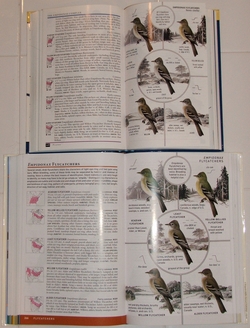 Most of Peterson’s paintings have been ported over with no changes. However, some digital enhancements have been done to many of the illustrations. If you click on this comparison picture of the flycatcher plates you should be able to see some subtle differences (the new book is on bottom). Each of these empids have been modified at least slightly, although my photography probably won’t allow you to see some of it. But you can easily see, for example, that the Yellow-bellied is now more greenish above and the primary projection of the Least is shorter.
Most of Peterson’s paintings have been ported over with no changes. However, some digital enhancements have been done to many of the illustrations. If you click on this comparison picture of the flycatcher plates you should be able to see some subtle differences (the new book is on bottom). Each of these empids have been modified at least slightly, although my photography probably won’t allow you to see some of it. But you can easily see, for example, that the Yellow-bellied is now more greenish above and the primary projection of the Least is shorter.
These changes have been used to add or modify field marks, change the shape, or make other subtle modifications according to the current knowledge of identification. All of the ones that I noticed on species that I’m familiar with have improved the image.
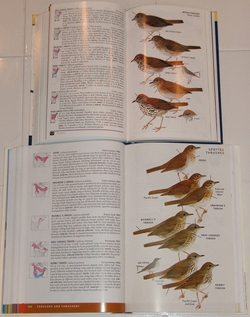 However, there are some more extensive changes as well, as evidenced by this plate of spotted thrushes. If you look closely at the thrushes shown on both plates – Veery, Gray-cheeked, Swainson’s, and Hermit – you will see that they have not only been modified,
However, there are some more extensive changes as well, as evidenced by this plate of spotted thrushes. If you look closely at the thrushes shown on both plates – Veery, Gray-cheeked, Swainson’s, and Hermit – you will see that they have not only been modified, they are completely new paintings Update: actually, it is not new. See below…. In this case there are some differences, such as the amount and darkness of the breast spots, that could have been accomplished with enhancements instead of a completely new image. Thus, presumably there was another reason for the replacement. For this plate, I think it was the addition of the new bird, Bicknell’s Thrush, and the inclusion of the western forms of Swainson’s and Hermit. I am assuming that in order to include these new images it necessitated a compete redo.
There are a few cases of replacement where the reasoning is not evident to me. But most appear to be a case of plate layout, as with these thrushes, or where the changes needed were so extensive that it made more sense to start from scratch. However, it is obvious that great care has been taken to make sure that these changes and replacements do not stand out. Where possible, the birds in the new paintings have been placed in the exact same pose as in Peterson’s original. Many times I had to carefully examine the images to tell whether they had been enhanced or completely replaced. Unless you are extremely familiar with Peterson’s work, or compare the plates side-by-side, you will probably not notice the changes.
There are also some changes on the facing pages, such as the increased size for the map thumbnails. As in the previous regional guides, there is a section in the back that gathers together all of the maps in a much larger format, with annotations.
Update: I finally got a chance to do some comparisons with the Western guide. It turns out that many of the paintings I thought had been redone were actually taken from the Western edition instead of the more recent Eastern. That includes these thrushes (except the Bicknell’s is still new). I had figured that the plates in the Eastern, being worked on much more recently, were more up-to-date. But there are probably more considerations that I’m not aware of.
No wonder all of those “new” paintings fit in so well! 🙂
For more information on this guide, see its featured page – The New Peterson Guide.
Posted by Grant McCreary on July 14th, 2008.





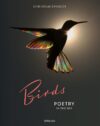
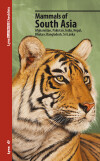
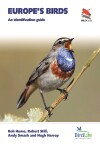
Comment